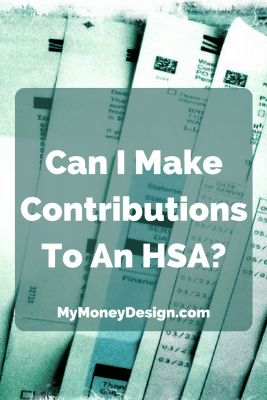HSA’s (Health Savings Accounts) have been gaining a lot of buzz in the personal finance community.
In case you’ve never heard of them, HSA’s are a type of special investment account in the U.S. you can setup to help bank money that can be used for medical expenses – tax free! This means that similar to your retirement accounts, you get a tax-break on the front-end … just for saving your money.
For years, we’ve been using an FSA (flexible spending account) to help stash tax-advantaged funds that we can use for medical expenses.
But the problem there has been their “use it or lose it” policy – if you contribute too much to the plan and don’t redeem it within a certain time frame, then you end up losing your savings. That can get a little tricky.
On top of that, if you’re an early retirement seeker like myself, then HSA’s also lend themselves to some pretty unique tax-advantages on the middle and back-end that make them even more appealing.
After digging into them a little bit more, here’s what I’ve learned about my ability to make contributions to an HSA.
Perhaps you might also discover if they would be a good fit for you and if you’d be eligible to participate.
Why Get an HSA?
As I started to mentioned earlier, there are a lot of good reasons for why to get an HSA if you can. Let me expand upon them:
- Contributions are tax deductible; both from you and your employer. Unlike 401k’s, you can also avoid paying FICA taxes (i.e. Social Security and Medicare) on your contributions.
- Employers can and often do make contributions to your HSA’s. To contrast this with an FSA, even though employers are allowed to contribute, many of them do not. If they do, there are restrictions.
- Withdrawals from HSA’s are tax-free as long as they are used to cover medical expenses. One interesting point though is that there is no time limit on when you can redeem those medical expenses. It could be years after the actual event.
- Unlike FSA’s, there is no “use it or lose it” penalty. The money stays your money forever. In fact, an unused balance converts to a traditional IRA after age 65.
- Contributions are invested, similar to how they would be with an IRA or 401k. They do not sit idle in an account.
- Your contributions grow tax-free. While they are in the HSA’, you do not pay taxes on any of the gains.
Early Retirement Advantages
If early retirement is your goal, then an HSA could be yet another very powerful tool that you can use to fund your financial independence.
Perhaps you noticed these 3 key tax-avoidance advantages:
-> No taxes on the front-end when the contributions are made
-> No taxes while the money grows
-> No taxes on the withdrawals (as long as they are for medical expenses)
The Mad Fientist has a great mega post “HSA – The Ultimate Retirement Account” where he describes in full how you could use this to your advantage.
In a nutshell:
- Contribute your HSA. Allow those funds to compound and grow over time.
- Pay your medical expenses out of pocket. Hold on to those receipts for later.
- When you retire early, start redeeming those medical expenses. This provides yet another income stream that you can have access to BEFORE age 59-1/2. (To learn about others, click here.)
That’s how you can get completely tax-free money. Feel free to give the whole article a read. It’s an interesting strategy to think about.
How to Qualify for an HSA
To see if you qualify for an HSA, you have to check the rules in IRS Publication 969 first. They are:
- You are covered under a high deductible health plan (HDHP), described later, on the first day of the month.
- You have no other health coverage except what is permitted under Other health coverage.
- You aren’t enrolled in Medicare.
- You can’t be claimed as a dependent on someone else’s 2016 tax return.
Unfortunately, the first item “HDHP” is the one that has disqualified me. Our medical deductibles are $1,500 per person and $3,000 per family.
As of 2017, the limits are:
- Minimum annual deductibles: $1,300 and $2,600 for self and family
- Maximum annual deductible and other out-of-pocket expenses: $6,550 and $13,100 for self and family
Wait a second! If the IRS family minimum is $2,600 and my plan is $3,000, then why don’t I qualify?
This is where you need to read all the rules very carefully. I noticed this small detail in the IRS text followed by an example that clearly disqualifies me:
“If either the deductible for the family as a whole or the deductible for an individual family member is less than the minimum annual deductible for family coverage, the plan doesn’t qualify as an HDHP.”
“Example. You have family health insurance coverage in 2016. The annual deductible for the family plan is $3,500. This plan also has an individual deductible of $1,500 for each family member. The plan doesn’t qualify as an HDHP because the deductible for an individual family member is less than the minimum annual deductible ($2,600) for family coverage. “
That pretty much closes the door on my situation. Oh well … I tried.
Does it make sense to switch to a higher deductible plan to qualify?
In my opinion, no.
Switching to a plan with a higher deductible puts you financially at risk. While a lot of people switch to higher deductible plans so that they can pay less per paycheck, there is always the chance that you will run into medical problems or need procedures. That means you’d be on the hook for paying most of it up to your deductible amount.
Money out of your pocket is still money out of your pocket; even with the HSA tax savings.
Though a lower deducible plan might cost a little more, it could end up saving you thousands of dollars you could have potentially spent otherwise with the higher deductible plan.
How to Apply for an HSA
If you do meet the requirements laid out in IRS publication 969 and would like to contribute to an HSA, you have the following options.
- Employer. Your employer is probably no stranger to the fact that the health care plan they offer is HSA compliant. Therefore, there’s probably a good chance that they already offer them. Speak to your HR representative to find out.
- Self. If you still qualify and your employer doesn’t offer you any assistance, you may still be able to start one on your own. Start by going to any reputable online investment service provider (such as Vanguard) and look under their products to see if they offer HSA’s. You’ll likely have to fill out a form. If you feel more comfortable, just like with investments, you can call to speak to a representative who will help walk you through the process.
2017 HSA Contribution Limits
If you plan on contributing to an HSA this year, the maximum allowable amount for 2017 is as follows:
- Self: $3,400
- Family: $6,750
Remember: This is not a “use it or lose it” type of system like the FSA. Any money that you do not use simply rolls over to the next year and potentially could be collecting earnings along the way.
Also, similar to a 401(k) or IRA, the HSA shelters you from paying taxes. So if we estimate a tax rate of 25%, this saves you roughly the following amount of money in taxes for the year:
- Self: $850
- Family: $1,687.50
Can I Also Contribute to an FSA?
No, not for medical expenses. But your employer may be able to offer a Limited-Purpose FSA. These are intended to help complement the HSA and may be established to pay for eligible vision and dental expenses.
Readers – How many of you can make contributions to an HSA? What advantages have you found to using them?
Featured image courtesy of Flickr



Leave a Reply